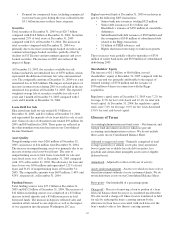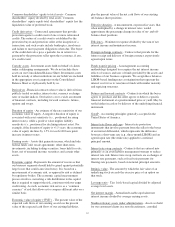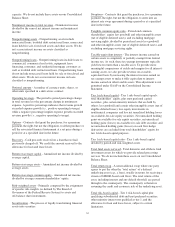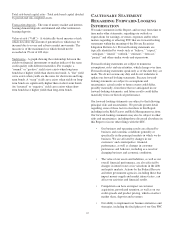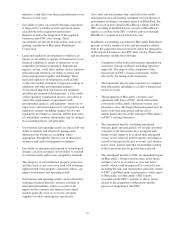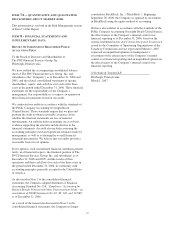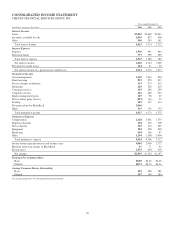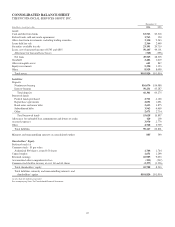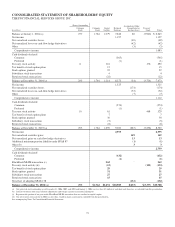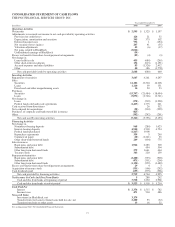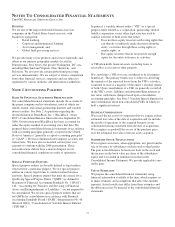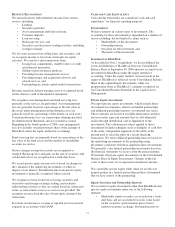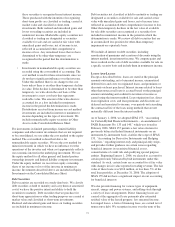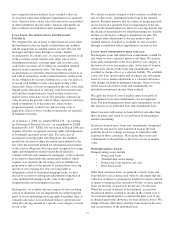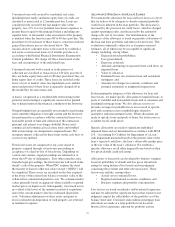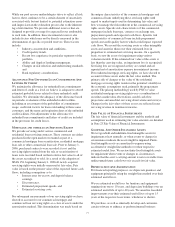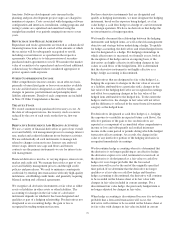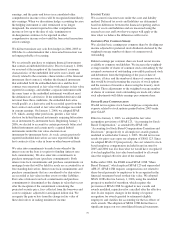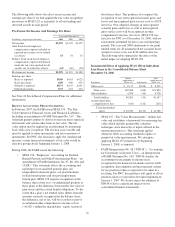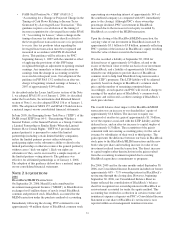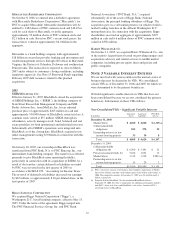PNC Bank 2006 Annual Report Download - page 82
Download and view the complete annual report
Please find page 82 of the 2006 PNC Bank annual report below. You can navigate through the pages in the report by either clicking on the pages listed below, or by using the keyword search tool below to find specific information within the annual report.N
OTES
T
O
C
ONSOLIDATED
F
INANCIAL
S
TATEMENTS
T
HE
PNC F
INANCIAL
S
ERVICES
G
ROUP
,I
NC
.
B
USINESS
We are one of the largest diversified financial services
companies in the United States based on assets, with
businesses engaged in:
• Retail banking,
• Corporate and institutional banking,
• Asset management, and
• Global fund processing services.
We provide many of our products and services nationally and
others in our primary geographic markets located in
Pennsylvania; New Jersey; the greater Washington, DC area,
including Maryland and Virginia; Ohio; Kentucky; and
Delaware. We also provide certain global fund processing
services internationally. We are subject to intense competition
from other financial services companies and are subject to
regulation by various domestic and international authorities.
N
OTE
1A
CCOUNTING
P
OLICIES
B
ASIS
O
F
F
INANCIAL
S
TATEMENT
P
RESENTATION
Our consolidated financial statements include the accounts of
the parent company and its subsidiaries, most of which are
wholly owned, and certain partnership interests and variable
interest entities. See Note 2 Acquisitions regarding the
deconsolidation of BlackRock, Inc. (“BlackRock”) from
PNC’s Consolidated Balance Sheet effective September 29,
2006. Our investment in BlackRock has been accounted for
under the equity method of accounting since that date. We
prepared these consolidated financial statements in accordance
with accounting principles generally accepted in the United
States of America (“generally accepted accounting principles”
or “GAAP”). We have eliminated intercompany accounts and
transactions. We have also reclassified certain prior year
amounts to conform with the 2006 presentation. These
reclassifications did not have a material impact on our
consolidated financial condition or results of operations.
S
PECIAL
P
URPOSES
E
NTITIES
Special purpose entities are broadly defined as legal entities
structured for a particular purpose. We use special purpose
entities in various legal forms to conduct normal business
activities. Special purpose entities that meet the criteria for a
Qualifying Special Purpose Entity (“QSPE”) as defined in
Statement of Financial Accounting Standards No. (“SFAS”)
140, “Accounting for Transfers and Servicing of Financial
Assets and Extinguishments of Liabilities,” are not required to
be consolidated. We review special purpose entities that are
not QSPEs for consolidation in accordance with Financial
Accounting Standards Board (“FASB”) Interpretation No. 46
(Revised 2003), “Consolidation of Variable Interest Entities”
(“FIN 46R”).
In general, a variable interest entity (“VIE”) is a special
purpose entity formed as a corporation, partnership, limited
liability corporation, or any other legal structure used to
conduct activities or hold assets that either:
• Does not have equity investors with voting rights that
can directly or indirectly make decisions about the
entity’s activities through those voting rights or
similar rights, or
• Has equity investors that do not provide enough
equity for the entity to finance its activities.
A VIE often holds financial assets, including loans or
receivables, real estate or other property.
We consolidate a VIE if we are considered to be its primary
beneficiary. The primary beneficiary is subject to absorbing
the majority of the expected losses from the VIE’s activities,
is entitled to receive a majority of the entity’s residual returns,
or both. Upon consolidation of a VIE, we generally record all
of the VIE’s assets, liabilities and noncontrolling interests at
fair value, with future changes based upon consolidation
accounting principles. See Note 3 Variable Interest Entities for
more information about non-consolidated VIEs in which we
hold a significant interest.
B
USINESS
C
OMBINATIONS
We record the net assets of companies that we acquire at their
estimated fair value at the date of acquisition and we include
the results of operations of the acquired business in our
consolidated income statement from the date of acquisition.
We recognize as goodwill the excess of the purchase price
over the estimated fair value of the net assets acquired.
S
UBSIDIARY
S
TOCK
T
RANSACTIONS
We recognize as income, when appropriate, any gain from the
sale or issuance by subsidiaries of their stock to third parties.
The gain is the difference between our basis in the stock and
the increase in the book value per share of the subsidiaries’
equity and is recorded in noninterest income in the
Consolidated Income Statement. We provide applicable taxes
on the gain.
U
SE OF
E
STIMATES
We prepare the consolidated financial statements using
financial information available at the time, which requires us
to make estimates and assumptions that affect the amounts
reported. Actual results may differ from these estimates and
the differences may be material to the consolidated financial
statements.
72


